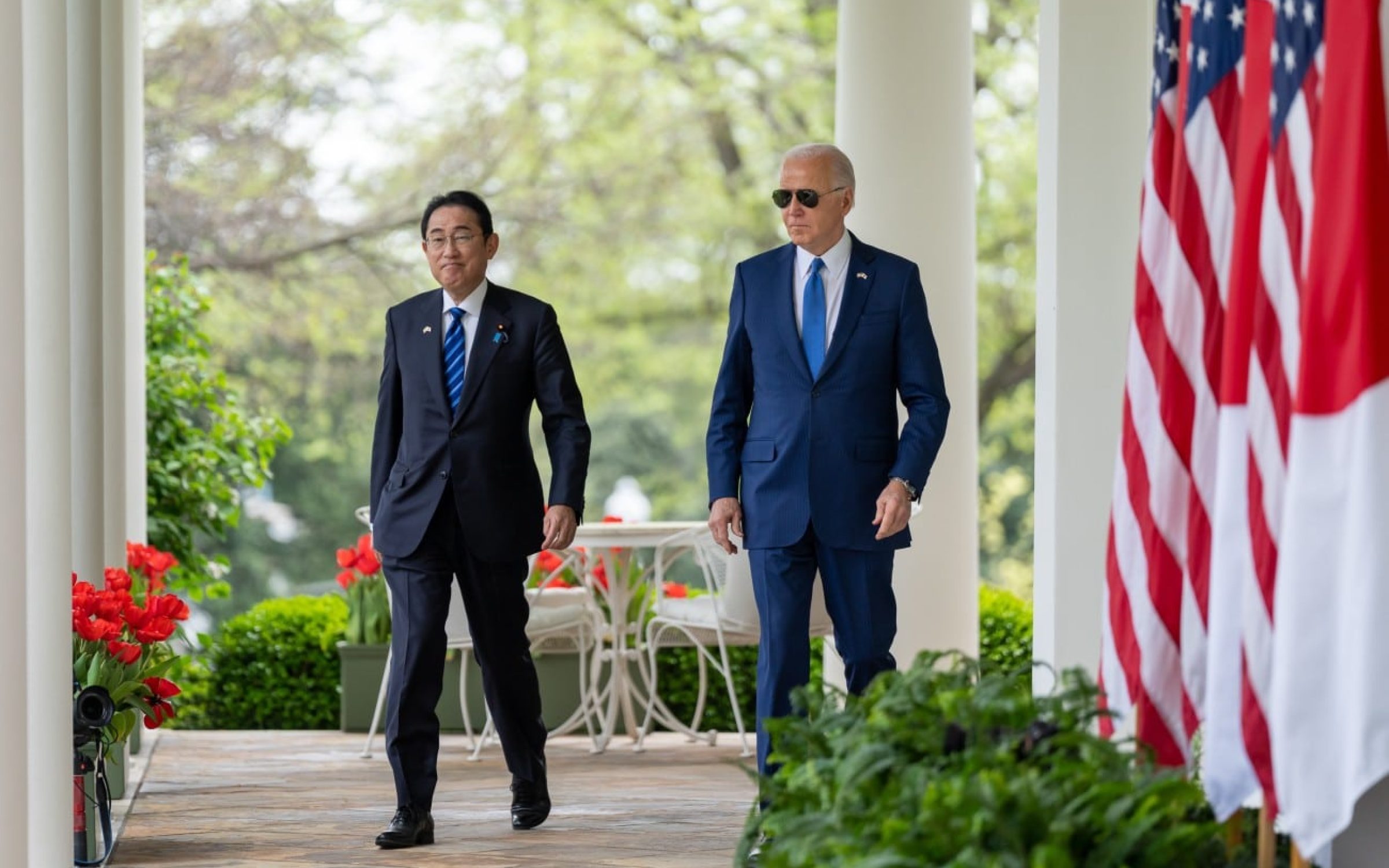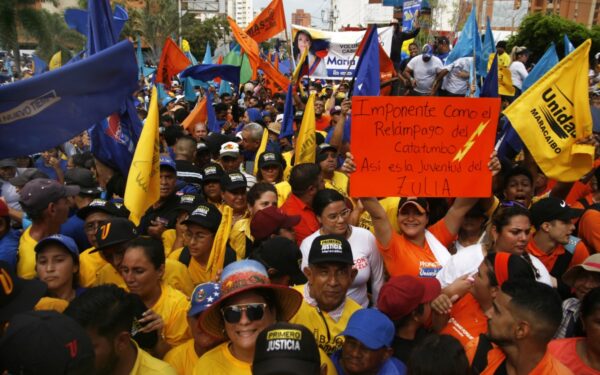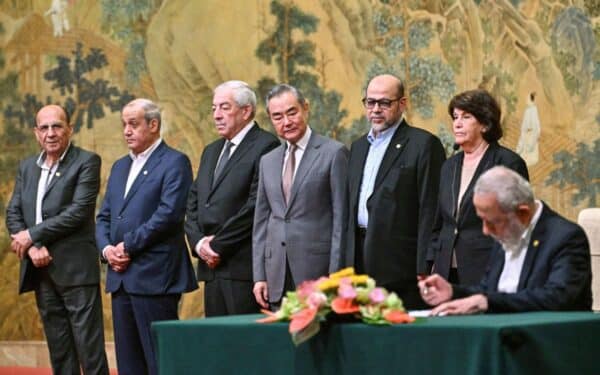This is Tim Marshall’s weekly column on geopolitics. Subscribe to Reaction here.
Special Relationship? Yes! Or to put it in Japanese: “Tokubetsuna Kankei? Hai!”
Early in the week, Britain’s Foreign Secretary David Cameron was in Washington to see Secretary of State Anthony Blinken and said, “There is no closer alliance for us than our partnership with the United States”. Later in the week, the Japanese Prime Minister Fumio Kishida was also in town but he got to see President Biden who told him that the Japan/US alliance was “stronger than it’s ever been”.
Both statements are true, but Lord Cameron’s inclusion of the words “for us” was an acceptance that America might not feel the same way. The UK’s position in the “Five Eyes” intelligence group, its NATO membership, place in the UN Security Council, and steadfast support for the US, means it could still be argued that America’s closest ally is the UK. But it could also be argued that as the US now regards the Pacific region as its most important foreign policy priority – Japan might fit the bill.
Japan acts quietly but very effectively on the international scene. For years, it spoke softly and barely carried any sort of sort of stick, never mind a big one. But over the past decade it has steadily shed its post-Second World War pacifist policies, reinterpreted its US-imposed constitution, and is rapidly rearming.
Its defence budget may still be just under 2 per cent of GDP, but defence spending is set to double by 2027. Japan is stockpiling munitions, investing in medium-range counter-strike missiles, and beefing up its cyber defences. Its air force is being upgraded with dozens of F-35 fighter jets, and the navy now has “helicopter destroyers”. In essence, the two vessels are aircraft carriers which can take up to 24 helicopters each. However, in 2021, a US jump jet took off from one, the first time a fixed-wing aircraft has launched from a Japanese carrier since WWII. Tokyo prefers not to call them “aircraft carriers” as those are considered offensive weapons systems, and the Japanese Defence Forces (JDF) are defensive. The distinction is lost on China especially as Japan intends to buy 42 F-35B fighter jets which can land and take off vertically from the ship’s decks. Late last year, JDF officers visited the UK carrier HMS Prince of Wales to watch F-35Bs do just that.
Japan hosts 54,000 American troops, more than are stationed in any other foreign country. The US 7th fleet is based in Tokyo Bay and includes the aircraft carrier the USS Ronald Reagan, various destroyers, cruisers, submarines, minesweepers and reconnaissance aircraft.
Both countries support a “free and open Indo-Pacific”, meaning they are committed to keeping the international sea lanes open. The senior commands of their militaries are increasing cooperation, holding joint exercises, and enhancing the interoperability of their troops and equipment. The Americans are expected to upgrade the rank of the US Forces in Japan from a 3-star general to a 4-star which would give the commander more authority in decision-making and make unifying operations easier.
Recently, the Philippines has begun integrating its military command with those of Japan and the US. Manila has granted the Americans more basing rights in the Philippines, and the Japanese have sold an advanced radar system to them. Manila has territorial disputes with China in the South China Sea and its vessels are often attacked. It needs powerful friends such as Japan and the US if it is to push back against these provocations. The Japanese state visit to Washington was immediately followed yesterday by a meeting between Kashida, Biden, and the Philippine President Ferdinand Marcos Jr – the first ever trilateral summit between the three countries.
Japan and the Philippines are part of the First Island Chain which faces the Chinese coastline and runs from the Kuril islands above Japan all the way down to Malaysia. Most of China’s exit routes out of the South China Sea, and into the Pacific, go through Japanese or Philippine waters. Part of Japan’s Okinawa territory (which hosts US troops) is just seventy miles from Taiwan, and the Luzon Strait, between Taiwan and the Philippines, is only 200 miles wide and has a Philippine-controlled island in the middle. This is a choke point which in the event of a conflict could be used to prevent the Chinese navy from coming around to the back of Taiwan.
This US/Japan/Philippines trilateral relationship is part of a shift in US policy in the region which traditionally consists of only bi-lateral agreements. It builds on the Quadrilateral Security Dialogue (QUAD) involving Japan, the US, Australia, and India, and the 2021 AUKUS security pact between Australia, the UK, and the US. The Americans have also put together the Chip 4 semiconductor group with Japan, South Korea, and Taiwan to keep the latest chip technology out of Chinese hands.
The AUKUS countries are now looking to see if Japan, South Korea, Canada and New Zealand could be partners in Pillar II of the agreement. Pillar I is helping Australia build nuclear-powered submarines, Pillar II is about wider cooperation in AI, hypersonics, and quantum computing.
Japan brings a lot to every table. It is an economic powerhouse and increasingly a major military force. It is trusted by most of its regional neighbours and can act as a bridge between them and the US. It is also one NATO’s “partners across the globe”.
Hence why this week, President Biden described the Japanese/American relationship as a “monumental alliance”. He added: “We stand at an inflection point where the decisions we make now are going to determine the course of the future for decades to come.” That’s special.
Write to us with your comments to be considered for publication at letters@reaction.life




